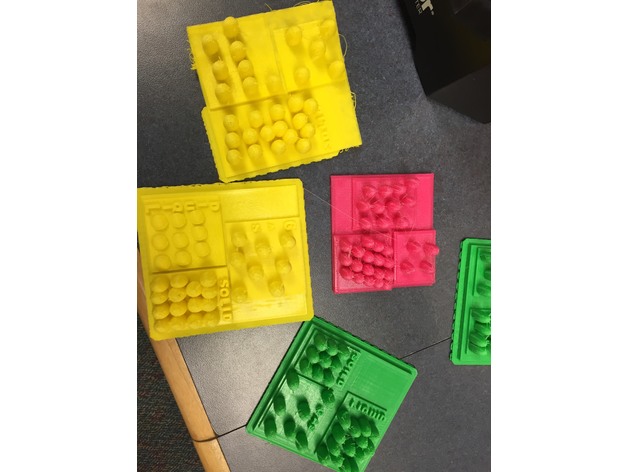
The Three States of Matter: Molecules - Solid, Liquid, and Gas
thingiverse
Students mastered the three states of matter by identifying and understanding basic types of molecules: solid, liquid, and gas. To learn about matter, students had to analyze the size, spacing, and movement of these states, then demonstrate their knowledge by creating a model of each. Students created 3 models in total, showcasing how each molecule reacted and moved around others. Print Settings Printer Brand: MakerBot Printer: MakerBot Replicator (5th Generation) Rafts: Yes Supports: Doesn't Matter Notes: Some Teachers wanted all 3 models on the same piece while others wanted the three models to be free-standing. I went in after the students and added a base for those teachers who wanted them. Standards CCSS Overview and Background Students mastered the three states of matter by identifying and understanding basic types of molecules: solid, liquid, and gas. To learn about matter, students had to analyze the size, spacing, and movement of these states, then demonstrate their knowledge by creating a model of each. Students created 3 models in total, showcasing how each molecule reacted and moved around others. ○ Skills Learned (Standards): Virginia Standard SOL 3.3 The student will investigate and understand that objects are made of materials that can be described by their physical properties. Key concepts include... a) Objects are made of one or more materials; b) Materials are composed of parts that are too small to be seen without magnification; and c) Physical properties remain the same as the material is reduced in size. Common Core Standards: 3.P.2.1 & 3.P.2.1: Physical Science: Matter: Properties and Change: Understand the structure and properties of matter before and after they undergo a change. Compare solids, liquids, and gases based on their basic properties. Lesson Plan and Activity Lesson Steps In class students learned about different phases of matter and the behavior of molecules in those states. Students were introduced to TinkerCAD and given their challenge: create a model for each state of matter: solid, liquid, and gas. Then students created a drawn draft of what they wanted to create. Students had to make sure their molecules were the correct shape as well as spacing between each other. After the student’s draft was approved by the teacher, students could begin working in TinkerCAD. Students logged into TinkerCAD and began creating their models of the three types of matter. Once students finished, the teacher needed to ensure that the creation had all of the components and was ready for printing. The students took their models home for one week and created a video diary showing where they saw the three states of matter in the real world. (Students took pictures of the different states of matter with their molecules in the picture.) We used the handout from: https://www.superteacherworksheets.com/matter/matter-article_WMTBN.pdf?up=1466611200 Materials Needed For this project we used: -the handouts from the links attached -filament for the printer -iPads for the video diary Skills Learned 3D Creation 3D Modeling Molecules Matter Duration of Lesson After students learned about the States of Matter unit in class, the actual 3D modeling and creating part took the students about 45-minutes in the computer lab. Preparation Before beginning in TinkerCAD, students needed to understand what the different states of matter molecules looked like. They had to understand how the molecules interacted and worked. Rubric and Assessment By the end of the project, students should have designed three models. They should have a solid, liquid, and gas representation. They should be able to explain how the three states of matter made their molecules interact as well as a video diary of examples. References https://educators.brainpop.com/bp-topic/states-of-matter/ http://www.cpalms.org/Public/PreviewResourceLesson/Preview/46565
With this file you will be able to print The Three States of Matter: Molecules - Solid, Liquid, and Gas with your 3D printer. Click on the button and save the file on your computer to work, edit or customize your design. You can also find more 3D designs for printers on The Three States of Matter: Molecules - Solid, Liquid, and Gas.
